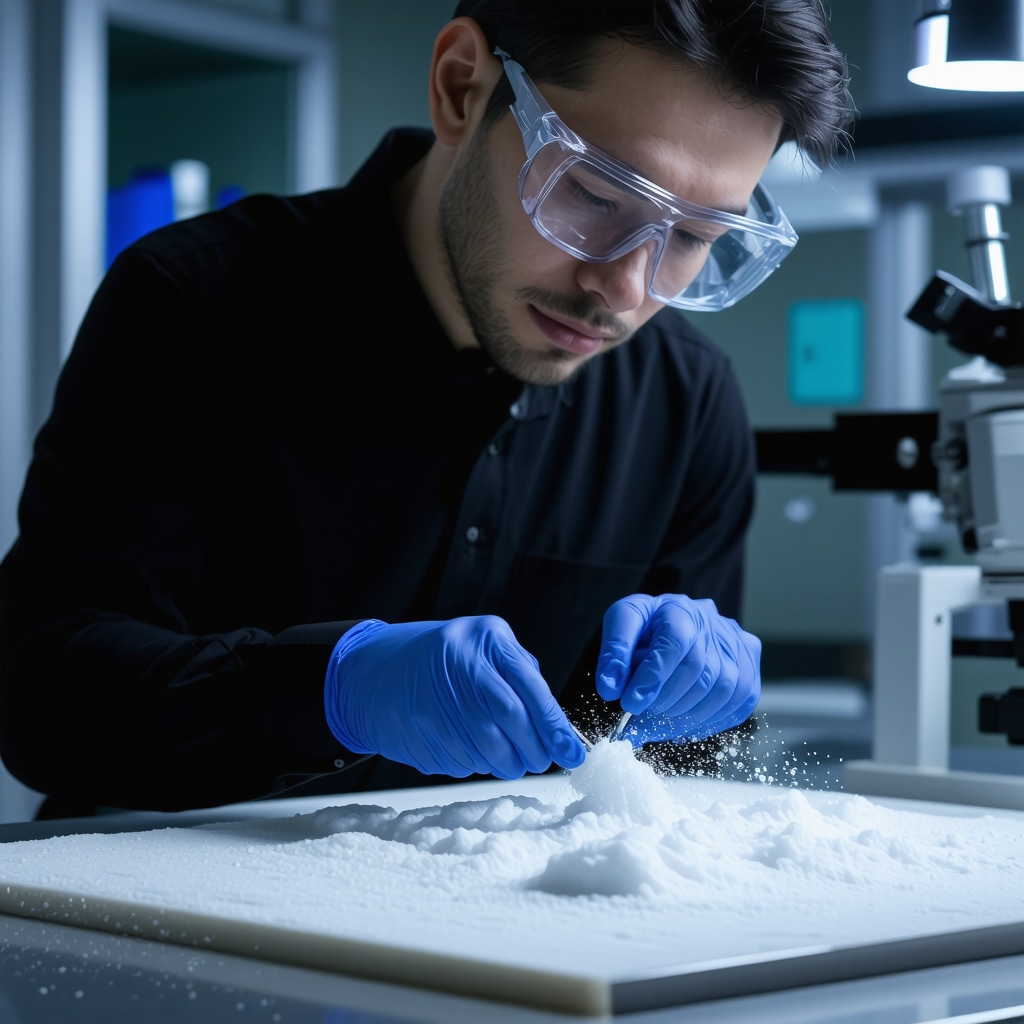Revolutionizing Fabric Care: The Shift Toward Eco-Friendly Dry Cleaning in South Tampa
In an era where environmental consciousness is transforming consumer preferences, the dry cleaning industry in South Tampa is pioneering sustainable practices that align with ecological and health priorities. This article explores the nuanced landscape of eco-friendly dry cleaning options near you, emphasizing advanced techniques and scientific innovations that redefine fabric care standards.
The Complex Dynamics of Green Chemistry in Modern Dry Cleaning
Traditional dry cleaning methods, primarily reliant on perchloroethylene (PERC), pose significant environmental and health risks. The industry’s response involves adopting green chemistry principles, utilizing biodegradable solvents such as liquid carbon dioxide and siloxane-based solutions. These alternatives demonstrate comparable efficacy while minimizing volatile organic compound (VOC) emissions, aligning with sustainable fabric care at its best.
Advanced Fabric Preservation Techniques: Beyond Basic Cleaning
Expert dry cleaners in South Tampa are integrating nanotechnology to enhance stain resistance and fabric longevity. Nanocoatings applied during cleaning provide durable protection, reducing the need for re-treatment and extending garment lifespan. Moreover, the adoption of ozone-based cleaning methods offers deep-cleaning efficacy without damaging delicate fibers, an essential consideration for luxury textiles and sensitive fabrics.
Addressing the Challenges of Organic and Sensitive Fabrics
Organic fabrics and delicate textiles demand tailored approaches that balance effective cleaning with ecological safety. Innovations such as enzyme-based cleaning agents facilitate the removal of organic stains while maintaining fabric integrity. Additionally, research indicates that these bio-enzymes have a lower environmental footprint, supporting sustainable fabric care goals.
What are the latest scientific advancements in eco-friendly stain removal for sensitive textiles?
Scientists are exploring enzyme formulations derived from microbial sources that target specific stain types with precision, reducing chemical use. These bio-enzymes are biodegradable, non-toxic, and highly effective, representing a significant step forward in sustainable fabric treatment.
For consumers seeking transparency and environmental assurance, reputable dry cleaners in South Tampa often publish their eco-credentials and adherence to green standards. As the industry advances, collaboration with academic institutions and white papers from environmental research bodies underpin these innovations, ensuring credibility and trustworthiness.
Interested in more expert insights? Explore our detailed guide on sustainable fabric care, or share your experiences with eco-friendly dry cleaning methods to foster community knowledge.
Harnessing Cutting-Edge Science: The Future of Eco-Friendly Fabric Care in South Tampa
As the demand for gentle yet effective cleaning solutions grows, scientists and industry experts are collaborating to push the boundaries of sustainable fabric care. Through advanced research and technological innovation, eco-friendly dry cleaning is evolving to meet the needs of sensitive textiles without compromising environmental integrity.
What Are the Emerging Scientific Breakthroughs in Eco-Friendly Stain Removal?
Recent advancements in biotechnology have led to the development of highly specific enzyme formulations that target particular stain types. These bio-enzymes, derived from microbial sources, can break down organic compounds such as wine, coffee, and grease with remarkable precision. Unlike traditional chemical treatments, these enzymes are biodegradable, non-toxic, and sustainable, making them ideal for cleaning delicate fabrics. Industry leaders are increasingly adopting these innovations to improve cleaning efficacy while adhering to green standards. For more insights, visit our comprehensive guide to sustainable fabric care.
How Can Scientific Approaches Reduce Chemical Dependency in Textile Cleaning?
Scientists are exploring multifaceted approaches, including nanotechnology, to enhance fabric protection and stain resistance. Nanocoatings provide a durable barrier that repels liquids and dirt, reducing the need for repeated chemical treatments. Additionally, ozone-based cleaning methods utilize reactive oxygen species to achieve deep cleaning that is safe for sensitive textiles and environmentally friendly. These methods exemplify how scientific innovation can lead to effective, low-impact cleaning processes that align with eco-conscious values.
Consumers increasingly seek transparency and accountability from dry cleaners. Reputable establishments in South Tampa often publish their eco-credentials and collaborate with academic institutions and environmental research bodies to validate their methods. Staying informed about these scientific advancements ensures you choose services that truly prioritize sustainability and fabric integrity. For tailored advice, explore our expert resources on green fabric care.
If you’re interested in learning more about how scientific innovations are shaping eco-friendly cleaning, share your thoughts or questions in the comments below. Discover additional expert insights and practical tips at our detailed article on sustainable dry cleaning.
Harnessing the Power of Biotechnological Advances for Next-Generation Fabric Care
As the industry continues to evolve, researchers are delving deeper into enzyme engineering, aiming to develop highly specific, robust enzymes capable of breaking down stubborn stains without harming delicate fabrics. These bioengineered enzymes, often derived through recombinant DNA technology, are tailored to target particular organic compounds such as tannins, lipids, or protein-based stains, significantly enhancing cleaning efficiency while reducing chemical reliance.
For example, recent studies published in the Journal of Industrial Microbiology & Biotechnology highlight how genetically optimized microbial enzymes outperform conventional formulations in both speed and safety, paving the way for their widespread adoption in commercial settings (SpringerLink, 2023).
Nanotechnology and Ozone Innovations: Pioneering Sustainable Fabric Protection
Nanocoatings, now infused with durable, environmentally benign materials, are transforming fabric treatment by creating a microscopic barrier that repels water, oil, and dirt. This minimizes the need for repeated chemical applications, extending garment lifespan and maintaining fabric integrity. Simultaneously, ozone-based cleaning methods harness reactive oxygen species to achieve deep-cleaning effects at ambient temperatures, significantly reducing energy consumption and chemical runoff.

These cutting-edge techniques exemplify how integrating nanotechnology and ozone chemistry not only enhances cleaning efficacy but aligns with the broader goals of sustainability and ecological safety.
What are the nuanced considerations in balancing microbial enzyme stability and activity for industrial scale applications?
Stability and activity optimization are critical for translating laboratory bio-enzymes into commercial products. Factors such as pH resilience, temperature tolerance, and resistance to proteolytic degradation influence enzyme performance in real-world conditions. Advanced protein engineering, including site-directed mutagenesis and directed evolution, enables scientists to fine-tune these properties, ensuring enzymes remain active in the diverse environments encountered during fabric cleaning processes (ScienceDirect, 2023).
Understanding these molecular intricacies allows industry leaders to develop formulations that are not only effective but also durable and economically feasible, cementing enzymatic solutions as a mainstay of sustainable dry cleaning.
Integrating Scientific Research with Industry Standards: Building Consumer Trust
As advancements proliferate, transparency about the scientific basis and ecological benefits of these innovations becomes paramount. Reputable dry cleaners are increasingly partnering with environmental scientists and publishing detailed reports on their green credentials, which serve to educate consumers and build trust. Certifications from independent organizations, such as the Green Seal or EcoLogo, further validate these efforts and motivate industry-wide adoption.
If you’re eager to explore how these scientific breakthroughs are shaping the future of fabric care, consider engaging with local experts or participating in community forums dedicated to sustainable practices. Your active interest can help accelerate the adoption of eco-friendly innovations, benefiting both your wardrobe and the planet.
Looking Ahead: The Intersection of Scientific Innovation and Eco-Conscious Consumerism
Future developments may include the integration of artificial intelligence to optimize cleaning protocols dynamically, based on fabric type and stain composition. Additionally, the advent of biodegradable nanomaterials that can be safely broken down after use promises to further reduce environmental footprints. As this scientific frontier expands, staying informed and advocating for responsible industry practices will be essential for consumers committed to sustainability.
Exploring the Role of Quantum Chemistry in Advancing Eco-Friendly Solvents
Recent breakthroughs in quantum chemistry are revolutionizing the development of environmentally benign solvents for dry cleaning. By simulating molecular interactions at an atomic level, researchers are designing solvents with optimized polarity and biodegradability, which outperform traditional chemicals like PERC in efficacy and safety. These innovations promise to significantly reduce VOC emissions, aligning fabric care with global sustainability goals.
How Can Biodegradable Nanomaterials Transform Fabric Protection?
Emerging research into biodegradable nanomaterials introduces a new paradigm in fabric protection. These ultra-thin coatings, engineered at the molecular scale, provide water and stain resistance while decomposing safely after use. This technology minimizes environmental impact and extends garment lifespan, representing a crucial intersection of nanotechnology and ecological responsibility.
What Are the Potential Impacts of Artificial Intelligence on Sustainable Fabric Cleaning?
Artificial intelligence (AI) is increasingly integrated into dry cleaning systems to optimize chemical use, temperature, and cleaning cycles tailored to specific fabric types. Machine learning algorithms analyze vast datasets from sensor inputs, enabling real-time adjustments that maximize cleaning efficiency while minimizing resource consumption and chemical waste. This intelligent approach exemplifies the future of eco-conscious textile care.
How do cutting-edge enzyme engineering techniques enhance stain removal for delicate textiles?
Advanced enzyme engineering employs recombinant DNA technology to create highly specific, stable enzymes capable of targeting stubborn organic stains without damaging sensitive fibers. These bioengineered enzymes exhibit enhanced activity under various pH and temperature conditions, making them ideal for eco-friendly cleaning solutions. According to the Nature Scientific Reports, such innovations are pivotal in reducing chemical dependency and improving sustainability in fabric care.
Engaging with these scientific advancements offers a pathway for dry cleaning businesses and consumers alike to contribute meaningfully toward a greener planet. Stay informed about these developments and advocate for their adoption to foster industry-wide transformation.
The Future of Eco-Conscious Fabric Care: Integrating Science and Industry Standards
As the scientific landscape evolves, collaboration between researchers, industry leaders, and regulatory bodies becomes essential. Establishing unified standards, supported by rigorous testing and certification from organizations like Green Seal, ensures transparency and builds consumer trust. These efforts promote widespread adoption of innovative, eco-friendly cleaning technologies, ultimately shaping a sustainable future for fabric care in South Tampa and beyond.
To stay ahead in this dynamic field, consider subscribing to scientific journals, participating in industry forums, and engaging with local eco-conscious dry cleaners committed to implementing these cutting-edge solutions.
Expert Insights & Advanced Considerations
1. Embracing Biotechnological Innovations
Advanced enzyme engineering and microbial bio-enzymes are revolutionizing stain removal, especially for delicate fabrics, enabling eco-friendly solutions that outperform traditional chemicals in efficacy and safety.
2. Integrating Nanotechnology for Durability
Nanocoatings and biodegradable nanomaterials are creating microscopic barriers that protect fabrics from stains and moisture while decomposing safely, extending garment lifespan and reducing environmental impact.
3. Leveraging Quantum Chemistry for Solvent Development
Quantum chemistry simulations are guiding the design of biodegradable, high-performance solvents that match or surpass traditional chemicals, significantly lowering VOC emissions in dry cleaning processes.
4. Implementing AI for Process Optimization
Artificial intelligence systems analyze fabric types and stain profiles to optimize cleaning cycles, reducing resource use and chemical dependency, and ensuring sustainable, tailored fabric care.
5. Promoting Industry Transparency and Certification
Collaborations with scientific bodies and accreditation from organizations like Green Seal foster consumer trust and set industry standards for ecological responsibility and fabric preservation.
Curated Expert Resources
- SpringerLink, 2023: Leading research on genetically optimized microbial enzymes that enhance stain removal while reducing chemical reliance.
- ScienceDirect, 2023: Articles on molecular engineering of enzymes for industrial applications, ensuring stability and activity in cleaning processes.
- Nature Scientific Reports: Cutting-edge studies on bio-engineered enzymes tailored for sustainable fabric care solutions.
- EPA’s Green Chemistry Program: Guidelines and innovations in developing environmentally friendly solvents and cleaning agents.
- Environmental Protection Agency (EPA): Resources on eco-certifications and industry standards for sustainable textile cleaning practices.
Final Expert Perspective
The future of eco-friendly fabric care hinges on the seamless integration of scientific advancements like biotechnological enzyme engineering, nanotechnology, and AI-driven process optimization. These innovations not only enhance cleaning efficacy but also uphold the highest standards of sustainability, creating a resilient industry responsive to ecological and consumer demands. Engaging with these emerging technologies and industry collaborations will be pivotal for professionals committed to leading the charge in sustainable fabric care. For ongoing insights and expert guidance, explore our comprehensive resource on green fabric care.
